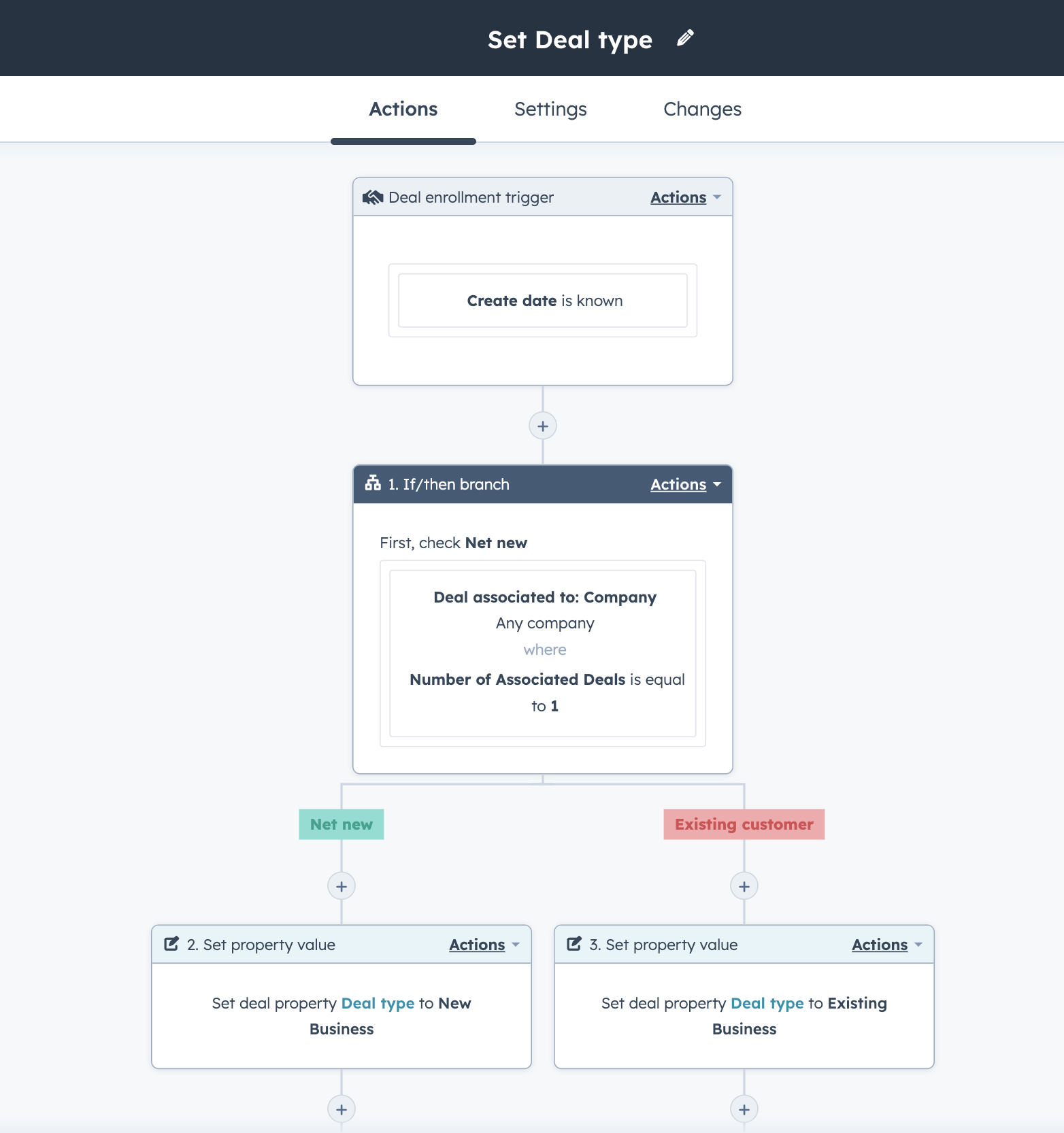HubSpot Data Management: How to capture deal source in HubSpot
Differentiating between revenue from net new and existing customers empowers you to make data-driven decisions and maximise customer value. Here's how to capture it in HubSpot.
What is net new business?
Net new business refers to revenue generated from any newly acquired customer - excluding upsells or cross-sales to the existing active customers.
What is existing business?
Existing business refers to any revenue generated from existing customers - fairly self-explanatory!
Why do I need to know whether revenue is from net new or existing customers?
Understanding whether revenue is generated from net new or existing customers is crucial for various reasons:
- Growth and Expansion: Knowing the proportion of revenue from net new customers helps businesses assess their ability to attract new customers and expand their customer base. This information plays a vital role in evaluating growth strategies and determining the effectiveness of marketing and sales efforts.
- Customer Acquisition Cost (CAC): Calculating the CAC is essential for assessing the financial feasibility of acquiring new customers. By comparing the revenue generated from net new customers with the cost of acquiring them, businesses can gain insights into the efficiency of customer acquisition and make informed decisions regarding resource allocation.
- Customer Lifetime Value (CLV): Distinguishing between revenue from net new and existing customers enables businesses to evaluate the long-term value of their customer base. Existing customers tend to have a higher CLV as they have already established a relationship with the company and are more likely to make repeat purchases. Understanding the revenue contribution from existing customers helps prioritise customer retention strategies and allocate resources accordingly.
- Performance Evaluation: Monitoring the revenue from net new and existing customers allows businesses to assess the effectiveness of their marketing, sales, and customer retention strategies. It helps identify areas for improvement and optimise approaches to maximise revenue growth.
- Forecasting and Planning: Tracking revenue from net new customers over time enables businesses to forecast future growth and set realistic revenue targets. This information aids in financial planning, resource allocation, and making informed decisions about sales and marketing strategies.
How to capture net new versus existing business in HubSpot
HubSpot has a number of default deal properties to help you track and manage your deals. One of them being a drop down property called Deal type.
The deal type property allows you to categorise the deals in your pipeline. The default options created by HubSpot are already set as:
- New Business
- Existing Business
Though you can edit or add new deal types in your deal property settings, personally I don't see any needs for additional deal types. Any further context on your deal can be captured in other deal properties or in the line items associated to the deal. For example, if you are an advertising agency and want to distinguish one off projects versus a retained service, you could store that information either in another deal property or at the line item level.
Personally, I like the simplicity of the deal type property. It's hard to be misunderstood but powerful in reports!
How to build automation to set the deal type in HubSpot
Select 'Get Started' below to follow along and build out your automation workflow to set deal type.
If you have the Scribe extension, you can follow along within your HubSpot portal, by clicking the icon bottom right to open the guide in a new tab and then within action one in the new tab select 'Guide me'.
When you've finished your workflow should look like this:
 Author: Hannah Fisher
Author: Hannah Fisher
HubSpot CRM Platform Consultant
